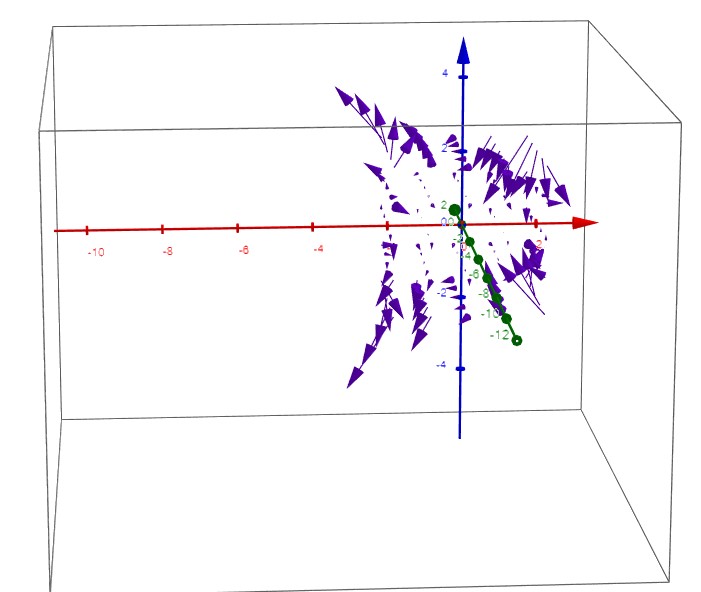| Line 33: | Line 33: | ||
</math> | </math> | ||
| − | [[File:Electric field representation| | + | [[File:Electric field representation.jpeg|701px|thumbnail|center|How this electric field looks like in 3D space]] |
| − | b. The charge density of the field at <math>(2,-3)</math> | + | b. The charge density of the field at <math>(2,-3,5)</math> |
<math></math> | <math></math> | ||
Revision as of 22:50, 6 December 2020
Electric Potential Sample Problem
Given electric potential equation $ V = x^3yz+2y^2z+xz^4 $, find:
a. The corresponding electric field equation for this potential
Using the identity $ E = - \nabla V $, we know that we need to compute the gradient of $ V $. We get:
$ \nabla V = \left[\begin{array}{l} \frac{\partial}{\partial x}(x^3yz+2y^2z+xz^4) \\ \frac{\partial}{\partial y}(x^3yz+2y^2z+xz^4) \\ \frac{\partial}{\partial z}(x^3yz+2y^2z+xz^4) \end{array}\right] \\ \nabla V = \left[\begin{array}{l} 3x^2yz + z^4 \\ x^3z + 4yz \\ x^3y + 2y^2 + 4xz^3 \end{array}\right] $
Applying the identity, we get:
$ E = \left[\begin{array}{l} -3x^2yz - z^4 \\ -x^3z - 4yz \\ -x^3y - 2y^2 - 4xz^3 \end{array}\right] $
b. The charge density of the field at $ (2,-3,5) $
$ E = - \nabla V $
$ \nabla \cdot E = \frac{\rho}{\epsilon_0} $
$ \Delta V = -\Large\frac{\rho}{\epsilon_0} $


